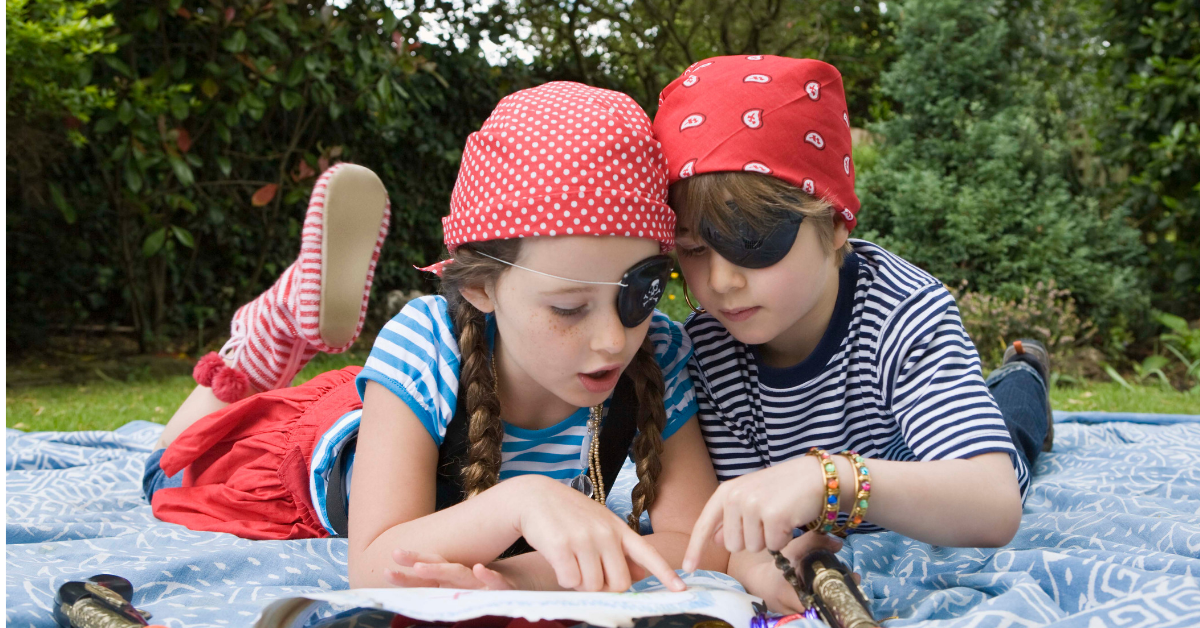For us, learning history is not about the memorizing of facts and dates. It is about people, and not just prominent historical figures and events. It is about the everyday person, like you and me, and all the tiny little details in regard to how we work and play, what we eat and wear, what we believe and how we act on those beliefs.
In order to make history make sense to us, we used a spine outline as to what needed to be learned to meet our state's criteria and found ways to make our history come alive. These are some of the things we did to make history more meaningful and interactive for our family.
- Homemade Archaeological Digs – We had a sandbox in our backyard, in which I would bury different "artifacts" for the kids to uncover with paintbrushes and to catalog. A few times they would also dig up some long-lost matchbox car, Lego, or other small toy left from when they were very young, which helped them learn how difficult it can be for a real archaeologist to locate the relics they are seeking and how exciting it is to find something unexpected.
- Family History – My children would spend time with their grandparents and other older relatives specifically to listen to and record stories from their days as kids and what it was like growing up during the 40's, 50's, and so on. We also researched and created family trees and while traveling we would visit places our ancestors had lived.
- Visit Historical Locations – There is a wonderful world of historical sites in America, many of which offer on-site museums, re-enactments, and knowledgeable curators willing to share.
- Models & Dioramas – We used all kinds of materials such as modeling clay, paper mâché, Legos, and even food to create 3-D models and dioramas of important events and people.
- Salt dough maps – Salt dough is a classic standby for creating maps that show topography.
- Cooking techniques – We made acorn flour and baked cookies from it (and yes, that was a one-time only thing for us, lol), homemade bread and butter, grilled meat over a fire pit and more. (CookIt is a great site for recipes based on a historical time period, if you are looking.)
- Time period costumes – We would go to thrift stores to pick out things that we would modify to look like knickers and shirts from colonial days or long dresses that we embellished to look medieval or we would even occasionally find a sewing pattern that didn't look too elaborate and sew something like a prairie dress, bonnet, and apron. My daughter would also make costumes for her doll.
- Plays or Speeches – One year we wrote a 2-person play about life on the Mayflower, created the set, costumes and props then my children presented it to our family on Thanksgiving. They also memorized and recited excerpts from important speeches. We videotaped these to keep as a record.
- Learned period dances – We would find video lessons and try to learn a dance from the time such as the minuet and square dancing.
- Music – We would find and listen to recordings of music written during a specific time. We would also try to learn to sing a song from that time.
- Time Capsule – We have a time capsule buried in our yard like this one from the Instructables.
- Timelines and Book of Centuries – We created paper chain timelines of specific time periods, adding events on strips of paper and making a visual that showed how people and events were linked. We also made traditional timelines for our walls as well as kept a Book of Centuries.
- Games – Not only did we play history-themed games, but we also learned games from history such as Backgammon, Mancala, Fox and Geese, Parcheesi, Marbles, Nine Man's Morris, Hoops, and several more.
- Handicrafts – We incorporated craft projects using methods from a time period including needle and bead crafts, making straw baskets, and making our own paint from eggs and plants. I thought my son was especially clever and imaginative in his handcrafting and he was fascinated with frontier and colonial handicrafts. He built a full-size tepee in our backyard from what he found in our back woods, using trees and brush to create it. He attempted to build a canoe from thin trees that he shaped into the frame, using vines to lash it together, and an old swimming pool liner. (He did take it to the nearby creek, but it only held up for about 10 minutes before it sank. But he got an "A" for ingenuity. 😊) In his teen years he built a makeshift forge from a gutted old gas grill. Using wood for the fire, an old hammer, and other common things he substituted for actual forging tools, he was able to make a few knives, curtain rod brackets, and a few other things from old railroad spikes and horseshoes.
- Biographies, Autobiographies, and Historical Fiction – We found that an enjoyable way to learn about the past is to read stories about it. Some of my children's favorite books were those from Laura Ingalls Wilder (both my son and daughter loved these), Marguerite de Angeli, Jack London, Andre Norton, Elizabeth George Speare and John Steinbeck.
Doing these things helped us make history less a sideline spectator subject and more of one that we participated in making our discoveries all the more memorable.


